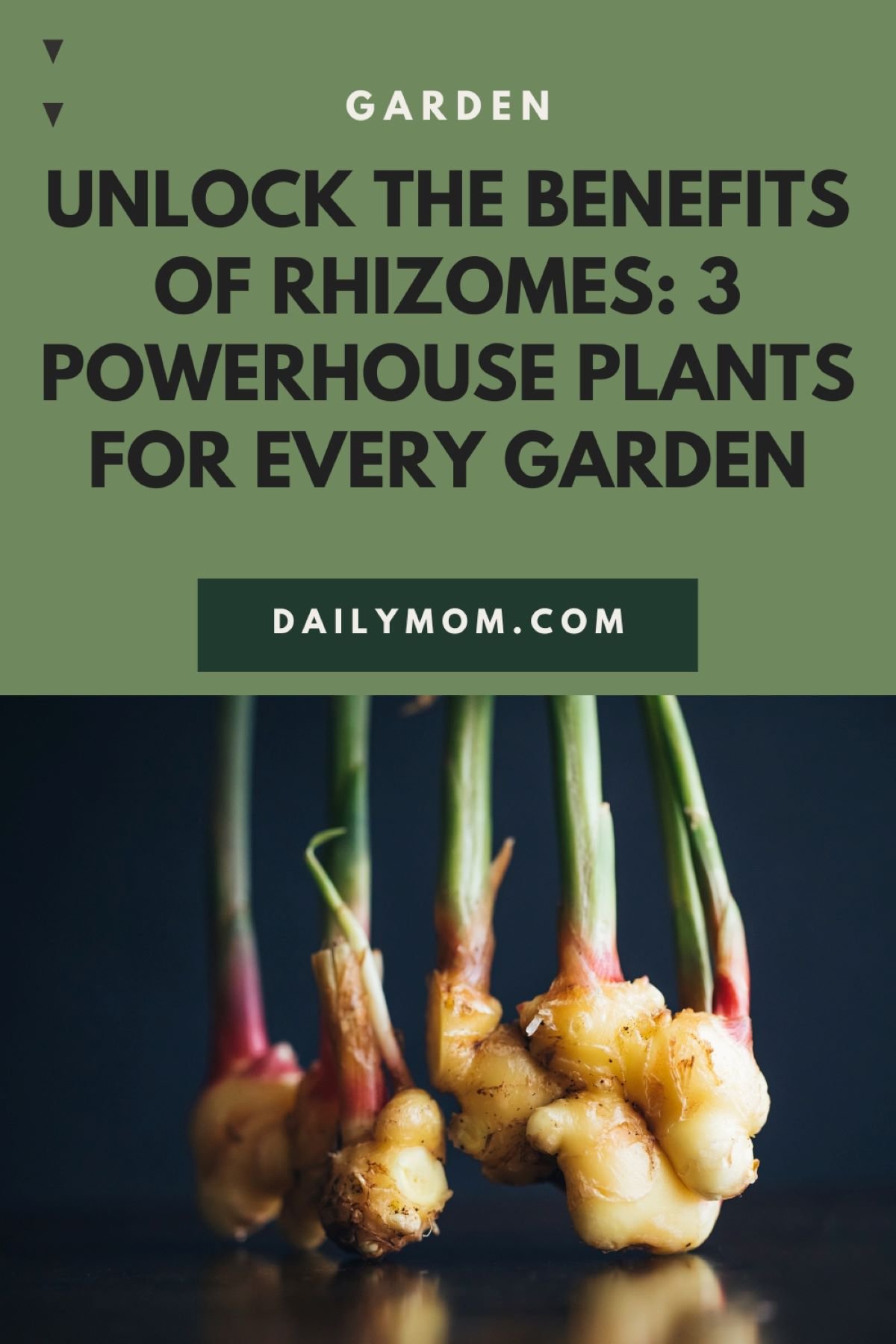As people become more conscious about their health and wellness, many are turning to natural remedies and superfoods to supplement their diets. Growing your own produce is a great way to ensure you have access to fresh, healthy ingredients, and what better way to start than with rhizomes? Rhizomes are underground stems that are capable of producing new shoots and roots. They are full of nutrients and easy to grow, making them perfect for any garden. Whether you’re a gardening enthusiast or someone who’s just getting started, these three rhizomes – turmeric, ginger, and shampoo ginger – are easy to grow and offer a myriad of benefits to every garden.
So why not unlock the benefits of these three powerhouse rhizomes in your very own garden? Not only are they easy to grow, but they also offer a variety of benefits, from health to culinary. Try growing them and see the benefits for yourself today!

What are Rhizomes?
So what exactly are rhizomes? Rhizomes are underground stems that grow horizontally under the soil. In plants like turmeric and ginger, a fully developed rhizome that is ready to be harvested is called a hand. They store nutrients and water and can help plants survive drought and other environmental stressors. They can also help a plant spread quickly, allowing them to cover a greater area than they would normally be able to reach.
Rhizomes are a powerful tool for gardeners, as they can be used to create a strong root system for plants. This helps plants better tolerate soil conditions and increases their ability to collect nutrients and water. The rhizomes also allow gardeners to easily propagate plants by taking small pieces of the rhizome and replanting them. This is especially useful for plants that are not easy to propagate through other methods.
In the case of turmeric and ginger, specifically, gardeners can easily grow some of the most anti-inflammatory and medicinal plants with ease. When you compare the cost of starting a crop of each to the cost of buying a consistent supply of turmeric powder or other supplements that use the roots of both plants, growing them yourself is a win-win.
Rhizomes are also beneficial to the environment, as they can help to reduce soil erosion by helping to keep plant roots in place. They also help to improve soil structure and fertility, adding organic matter into the soil which helps to retain water and improve drainage.
Read More: 8 Super Backyard Garden Care Tips for Pest Prevention and Management

How to Care for Rhizome Plants
Rhizomes are just one type of plant that can be grown in a garden, but they offer many benefits for gardeners. As a bonus, they’re really easy to care for.
Because rhizomes are a type of root structure that is used to propagate, a fully developed hand of turmeric or ginger can be cut to propagate multiple new plants, meaning the potential for them to be a repeat bumper crop is really high. (It is important to remember, however, to let freshly cut fingers scab over before planting to help avoid the risk of disease and rot.) Rhizomes are known for their hardiness and their ability to spread rapidly and generate a large number of plants in a relatively short period of time.
When growing rhizomes, it is important to consider their specific needs. Rhizomes require well-draining soil, with a pH of between 6.0 and 7.0. They should be planted in full sun or light shade, and should be kept moist but not wet so they don’t develop rot. Rhizomes should also be planted at least six inches apart, as they can spread rapidly and may choke out other plants if left too close together. When you’re trying to maximize a medicinal harvest, the last thing you want is for the hands to compete for room and fall short of a full harvest.
As a side note, rhizomes growing wider than they do deep. This is especially important to consider if you’re container gardening. A wider shallow planter will provide much higher yields than narrow deep buckets.
Fertilizing rhizomes is also important, as they are heavy feeders. A balanced fertilizer should be applied at least once a month during the growing season. Be sure to water the soil thoroughly after applying the fertilizer, as this will help the rhizomes to absorb the nutrients they need. This is especially important for container gardening, where you might not be able to practice crop rotation and the soil can become quickly depleted.
Finally, it is important to divide rhizomes every few years to prevent overcrowding and to ensure the plants remain healthy and productive. (Though if you’re growing turmeric and ginger for the medicinal benefits, you’re probably harvesting them seasonally anyway. This practice is more important to keep in mind for shampoo ginger, the rhizome of which is not the focus in growing.)
The best time to do this is in the spring when the plants are just starting to grow and the soil is still moist. Turmeric and ginger typically go dormant in the Fall and Winter if not harvested, but will sprout again as the weather warms. Carefully dig around the rhizomes and separate them using a sharp knife. Replant the divided sections in fresh soil and keep them moist for the best results.
Caring for rhizomes is not difficult, but it does require some knowledge and attention to ensure the plants remain healthy and productive. By following these simple tips, gardeners can enjoy the benefits of rhizomes for many years to come.
Read More: How To Create A Simple Indoor Garden And Gather Wellness Benefits

The Powerhouse Trio
Turmeric:
Turmeric has been used for thousands of years in traditional medicine, and for good reason. Curcumin, the active ingredient in turmeric, has anti-inflammatory properties, making it a great option for those with joint pain or arthritis. It also has antioxidant properties, which can help protect against cancer and other diseases.
Turmeric is easy to grow, and the plants can be started from rhizomes purchased at a garden center or even your local whole foods store. (Organic is important if you’re growing turmeric for medicinal purposes!)
Once planted (March to April is ideal in warmer weather climates), turmeric needs a warm, humid climate and well-drained soil. It can be harvested after around 8-10 months, when the foliage begins to turn yellow and die off, and the rhizomes can be used fresh or dried.
Turmeric can be used in a variety of ways, such as in curries, smoothies, or as a tea, or even dried and powdered for cooking, or taken in a veggie capsule. It’s very versatile!
Ginger:
Ginger is another popular rhizome that has been used for its health benefits for centuries. Ginger contains compounds called gingerols and shogaols which have anti-inflammatory properties and can help reduce nausea and vomiting.
Ginger is easy to grow, and follows nearly identical planting habits and timelines as turmeric, all the way down to the warm humid climate and well-draining soil.
Around the same timeframe as turmeric, ginger can be harvested and used fresh or dried, such as in teas, stir-fries, and desserts.
Shampoo Ginger:
Shampoo ginger is a unique rhizome that is native to Southeast Asia. It gets its name from the red pinecone-shaped flowers it develops that, when squeezed, secrete a clear soap-like liquid that has traditionally been used as a natural shampoo and body wash. The rhizome itself is also used in traditional medicine to help treat various ailments, containing compounds called flavonoids, which have antioxidant properties and can help protect against cancer and heart disease.
Its growing conditions and care are the same as turmeric and ginger–wide, shallow, well-draining soil, warm humid air, dormant in the winter and it comes back in the spring. Shampoo ginger does tend to like a little more shade than turmeric and ginger, though.
As a general note, all three of these rhizomes are not frost tolerant. If you live somewhere with regular freezes or snowfall, you’ll want to dig up any remaining rhizomes before winter and store them in a cool dry place until the ground thaws. For container gardening, you can simply move the container into a warmer protected place. These are, after all, tropical in origin.
Read More: 5 Amazing Uses for Ginger Oil
Rhizomes are an easy and nutritious addition to any garden, in the ground or in containers. Turmeric, ginger, and shampoo ginger especially are three powerhouse rhizomes that offer a range of health benefits and are easy to grow. Whether you use them in cooking or as natural remedies, these rhizomes are a great way to add flavor and nutrients to your diet. So why not give them a try and see how they can benefit you and your garden?
WANT TO READ MORE?
Check out the Garden category for more gardening tips and tricks!
CONNECT WITH DAILY MOM
💖 NEWSLETTER: DAILY READS IN YOUR INBOX 💖
Sign up to receive our picks for the best things to do, see and buy so you can relax and focus on more important tasks! Let us help you be the best version of yourself you can be!
BE SOCIAL WITH US
📌 LOVE IT? PIN IT!📌











































